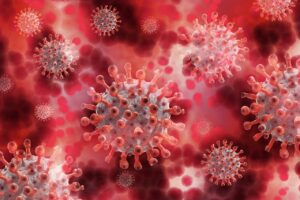Comprehending Viral Infections
Your Convenient Handbook for Maintaining Your Health Have you ever been ill with a bad cold, a chronic cough, or an unsettled stomach? You’ve probably fought off a viral virus. Even though these microscopic invaders are so frequent, knowing how they operate and how to defend yourself can make all the difference in the world. Now, let’s explore the intriguing (and occasionally annoying!) realm of viruses in a clear and understandable manner.

What Are They? The Little Troublemakers Consider viruses as minuscule, inanimate bundles of genetic material (DNA or RNA) encased in a protein shell. In contrast to bacteria, which are living things, viruses are incapable of self-reproduction. To create additional copies of themselves, they must take over your cells’ machinery. They are frequently referred to as “intracellular parasites” for this reason; they invade your home like unwanted guests! Fact Heading: Definitely Active, But Not Quite Alive! Many people believe that viruses are living things. They lack the ability to grow, have cells, and carry out metabolic functions on their own. But as soon as they enter a host cell, they become extremely active, multiply quickly, and frequently cause disease.
Viruses
How Do They Spread? The Covert Routes As masters of transmission, viruses can spread from one person to another in a variety of ways. Among the most popular routes are: Transmission of Droplets: When someone coughs, sneezes, or even just chats, microscopic virus-containing droplets can enter the air and be inhaled by other people. Consider the flu or the average cold. Contact Transmission: This refers to either indirect contact with contaminated objects (such as doorknobs or shared toys) or direct contact with an infected individual (like touching or kissing). In the case of “stomach flu,” norovirus is a prime example.

Vector-borne Transmission: Animals or insects, also referred to as vectors, are responsible for the spread of certain viruses. For example, mosquitoes can spread viruses that cause dengue or malaria. Food and Waterborne Transmission: Hepatitis A and other viral illnesses can be contracted by contaminated food or water. Understanding the Symptoms: Typical Signs of Viral Infections Depending on the type of virus and the biological system it infects, the symptoms of a viral infection might differ significantly. Nonetheless, the following are some typical indicators to watch out for: Fever: This is frequently your body’s defense against an infection. Weakness and Fatigue: Your immune system is exerting a lot of effort! Body Aches and Pains: It’s normal to feel uncomfortable.

* Sore throat and cough
especially when respiratory infections are involved. Gastrointestinal viruses frequently cause nausea, vomiting, and diarrhea. Headache: Often accompanies viral infections. Heading of Fact: Pay Attention to Your Health! Even though these are typical symptoms, it’s vital to keep in mind that they may also be signs of other illnesses. Always seek the advice of a medical expert if you have any concerns.
A Brief Overview of Distinguishing Bacterial Infections Because the symptoms of bacterial and viral infections can sometimes be confusing, it can be challenging to distinguish between the two. One significant distinction is that viruses cannot be killed by antibiotics, which only work against bacteria. Antibiotic resistance may result from using antibiotics to treat a viral infection. Often, your doctor can assist you in differentiating between the two. Self-Defense: The Best Line of Defense Against Viruses There are numerous efficient strategies to greatly lower your chance of infection, even though you cannot totally prevent all viruses:Hand cleanliness is paramount.
 *Stay Safe from Viruses
*Stay Safe from Viruses
Wash your hands often and thoroughly for at least 20 seconds with soap and water, especially before eating, after using the restroom, after coughing, or after sneezing. When soap and water are not accessible, hand sanitizer (at least 60% alcohol) is a good substitute. Vaccinations: The Allies of Your Immune System One of the most effective defenses against viral illnesses is vaccination. Before you become ill, they teach your immune system to identify and combat particular viruses. Consider childhood vaccinations and flu injections. Don’t Touch Your Face: Viruses can enter through your lips, nose, and eyes. Make an effort to stop touching your face needlessly.
Use the inside of your elbow or a tissue to cover your mouth and nose when you cough or sneeze as part of respiratory etiquette. Throw away tissues right away. Boost Your Immune System: Maintaining a healthy lifestyle is essential. Eat a healthy, well-balanced diet full of fruits and vegetables, get adequate sleep, and exercise frequently.

Remain at Home When ill: To avoid infecting others, remain at home if you’re feeling ill. Heading: Preventing is always preferable to treating! By taking these preventative measures, you can lower your risk of becoming ill and safeguard others around you. When to Get Medical Assistance: Don’t Wait. Some viral infections can be dangerous, but the majority are minor and go away on their own. Seek medical help if you have a fever that is high or persistent. Shortness of breath or difficulty breathing. Excruciating pain; abrupt lightheadedness or disorientation.
* Symptoms that don’t get better or get worse. You can stay healthy and navigate the world of microscopic invaders if you know what viral diseases are, how they spread, and how to defend yourself. Keep in mind that you and your loved ones can stay safe with a little education!










